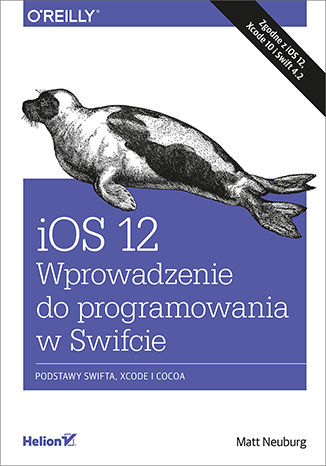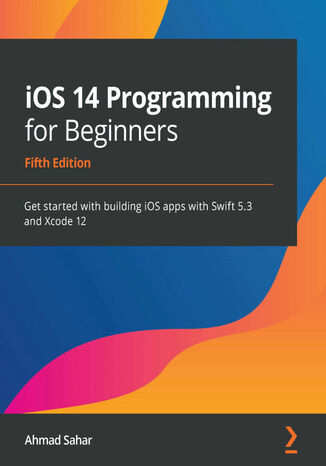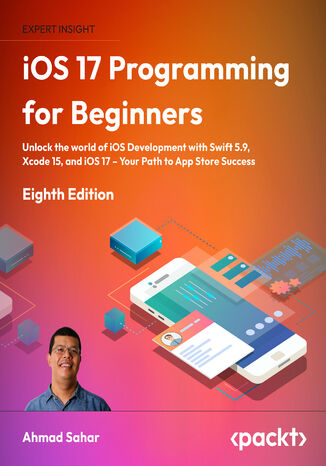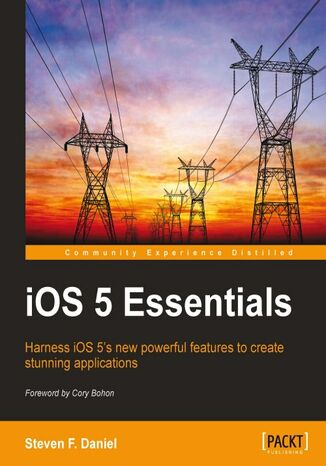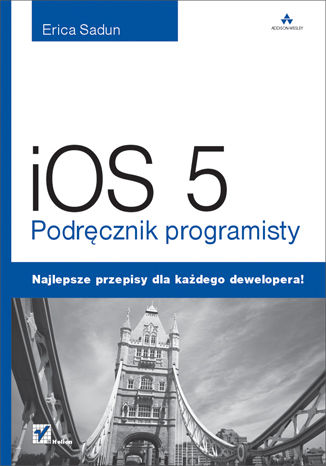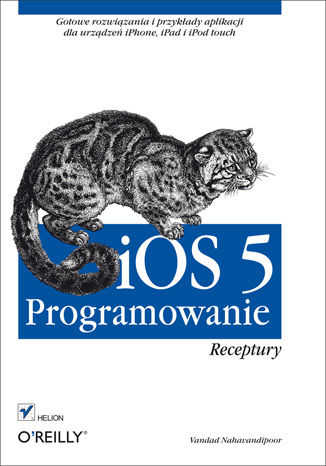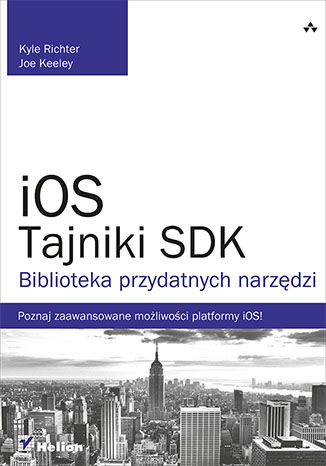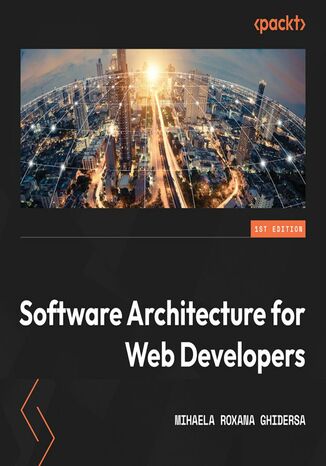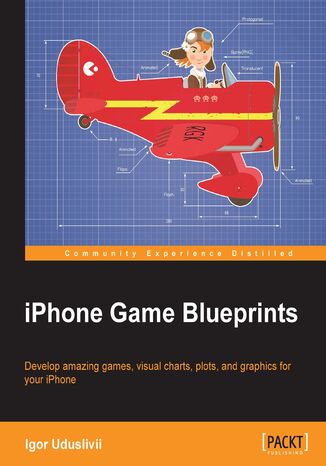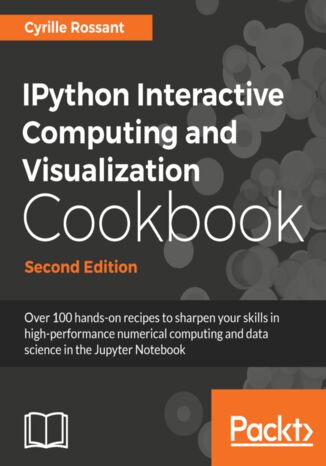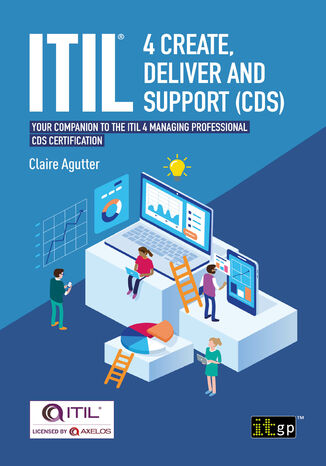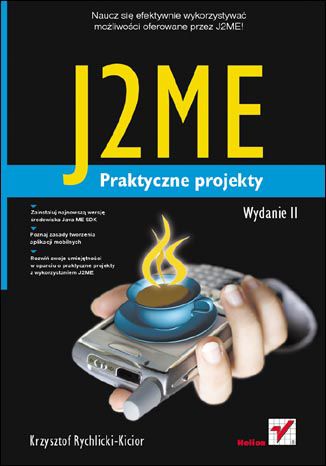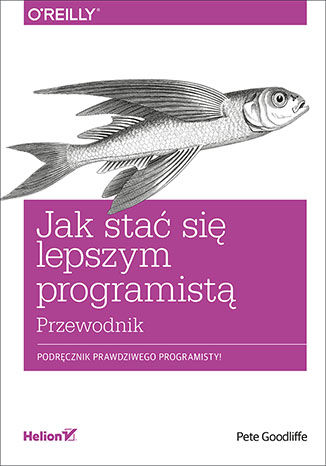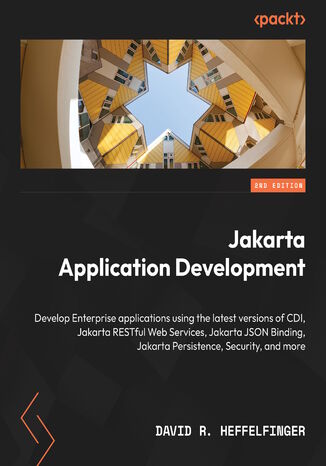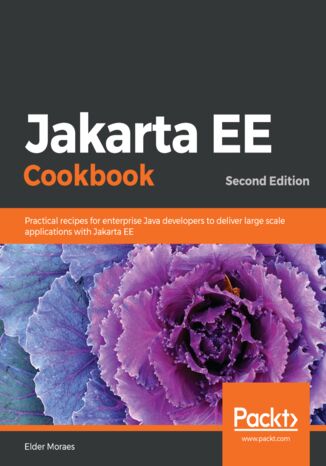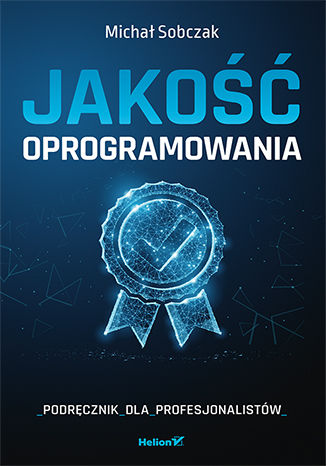Categories
Ebooks
-
Business and economy
- Bitcoin
- Businesswoman
- Coaching
- Controlling
- E-business
- Economy
- Finances
- Stocks and investments
- Personal competence
- Computer in the office
- Communication and negotiation
- Small company
- Marketing
- Motivation
- Multimedia trainings
- Real estate
- Persuasion and NLP
- Taxes
- Social policy
- Guides
- Presentations
- Leadership
- Public Relation
- Reports, analyses
- Secret
- Social Media
- Sales
- Start-up
- Your career
- Management
- Project management
- Human Resources
-
For children
-
For youth
-
Education
-
Encyclopedias, dictionaries
-
E-press
- Architektura i wnętrza
- Health and Safety
- Biznes i Ekonomia
- Home and garden
- E-business
- Ekonomia i finanse
- Esoterecism
- Finances
- Personal finance
- Business
- Photography
- Computer science
- HR & Payroll
- For women
- Computers, Excel
- Accounts
- Culture and literature
- Scientific and academic
- Environmental protection
- Opinion-forming
- Education
- Taxes
- Travelling
- Psychology
- Religion
- Agriculture
- Book and press market
- Transport and Spedition
- Healthand beauty
-
History
-
Computer science
- Office applications
- Data bases
- Bioinformatics
- IT business
- CAD/CAM
- Digital Lifestyle
- DTP
- Electronics
- Digital photography
- Computer graphics
- Games
- Hacking
- Hardware
- IT w ekonomii
- Scientific software package
- School textbooks
- Computer basics
- Programming
- Mobile programming
- Internet servers
- Computer networks
- Start-up
- Operational systems
- Artificial intelligence
- Technology for children
- Webmastering
-
Other
-
Foreign languages
-
Culture and art
-
School reading books
-
Literature
- Antology
- Ballade
- Biographies and autobiographies
- For adults
- Dramas
- Diaries, memoirs, letters
- Epic, epopee
- Essay
- Fantasy and science fiction
- Feuilletons
- Work of fiction
- Humour and satire
- Other
- Classical
- Crime fiction
- Non-fiction
- Fiction
- Mity i legendy
- Nobelists
- Novellas
- Moral
- Okultyzm i magia
- Short stories
- Memoirs
- Travelling
- Narrative poetry
- Poetry
- Politics
- Popular science
- Novel
- Historical novel
- Prose
- Adventure
- Journalism, publicism
- Reportage novels
- Romans i literatura obyczajowa
- Sensational
- Thriller, Horror
- Interviews and memoirs
-
Natural sciences
-
Social sciences
-
School textbooks
-
Popular science and academic
- Archeology
- Bibliotekoznawstwo
- Cinema studies
- Philology
- Polish philology
- Philosophy
- Finanse i bankowość
- Geography
- Economy
- Trade. World economy
- History and archeology
- History of art and architecture
- Cultural studies
- Linguistics
- Literary studies
- Logistics
- Maths
- Medicine
- Humanities
- Pedagogy
- Educational aids
- Popular science
- Other
- Psychology
- Sociology
- Theatre studies
- Theology
- Economic theories and teachings
- Transport i spedycja
- Physical education
- Zarządzanie i marketing
-
Guides
-
Game guides
-
Professional and specialist guides
-
Law
- Health and Safety
- History
- Road Code. Driving license
- Law studies
- Healthcare
- General. Compendium of knowledge
- Academic textbooks
- Other
- Construction and local law
- Civil law
- Financial law
- Economic law
- Economic and trade law
- Criminal law
- Criminal law. Criminal offenses. Criminology
- International law
- International law
- Health care law
- Educational law
- Tax law
- Labor and social security law
- Public, constitutional and administrative law
- Family and Guardianship Code
- agricultural law
- Social law, labour law
- European Union law
- Industry
- Agricultural and environmental
- Dictionaries and encyclopedia
- Public procurement
- Management
-
Tourist guides and travel
- Africa
- Albums
- Southern America
- North and Central America
- Australia, New Zealand, Oceania
- Austria
- Asia
- Balkans
- Middle East
- Bulgary
- China
- Croatia
- The Czech Republic
- Denmark
- Egipt
- Estonia
- Europe
- France
- Mountains
- Greece
- Spain
- Holand
- Iceland
- Lithuania
- Latvia
- Mapy, Plany miast, Atlasy
- Mini travel guides
- Germany
- Norway
- Active travelling
- Poland
- Portugal
- Other
- Przewodniki po hotelach i restauracjach
- Russia
- Romania
- Slovakia
- Slovenia
- Switzerland
- Sweden
- World
- Turkey
- Ukraine
- Hungary
- Great Britain
- Italy
-
Psychology
- Philosophy of life
- Kompetencje psychospołeczne
- Interpersonal communication
- Mindfulness
- General
- Persuasion and NLP
- Academic psychology
- Psychology of soul and mind
- Work psychology
- Relacje i związki
- Parenting and children psychology
- Problem solving
- Intellectual growth
- Secret
- Sexapeal
- Seduction
- Appearance and image
- Philosophy of life
-
Religion
-
Sport, fitness, diets
-
Technology and mechanics
Audiobooks
-
Business and economy
- Bitcoin
- Businesswoman
- Coaching
- Controlling
- E-business
- Economy
- Finances
- Stocks and investments
- Personal competence
- Communication and negotiation
- Small company
- Marketing
- Motivation
- Real estate
- Persuasion and NLP
- Taxes
- Social policy
- Guides
- Presentations
- Leadership
- Public Relation
- Secret
- Social Media
- Sales
- Start-up
- Your career
- Management
- Project management
- Human Resources
-
For children
-
For youth
-
Education
-
Encyclopedias, dictionaries
-
E-press
-
History
-
Computer science
-
Other
-
Foreign languages
-
Culture and art
-
School reading books
-
Literature
- Antology
- Ballade
- Biographies and autobiographies
- For adults
- Dramas
- Diaries, memoirs, letters
- Epic, epopee
- Essay
- Fantasy and science fiction
- Feuilletons
- Work of fiction
- Humour and satire
- Other
- Classical
- Crime fiction
- Non-fiction
- Fiction
- Mity i legendy
- Nobelists
- Novellas
- Moral
- Okultyzm i magia
- Short stories
- Memoirs
- Travelling
- Poetry
- Politics
- Popular science
- Novel
- Historical novel
- Prose
- Adventure
- Journalism, publicism
- Reportage novels
- Romans i literatura obyczajowa
- Sensational
- Thriller, Horror
- Interviews and memoirs
-
Natural sciences
-
Social sciences
-
Popular science and academic
-
Guides
-
Professional and specialist guides
-
Law
-
Tourist guides and travel
-
Psychology
- Philosophy of life
- Interpersonal communication
- Mindfulness
- General
- Persuasion and NLP
- Academic psychology
- Psychology of soul and mind
- Work psychology
- Relacje i związki
- Parenting and children psychology
- Problem solving
- Intellectual growth
- Secret
- Sexapeal
- Seduction
- Appearance and image
- Philosophy of life
-
Religion
-
Sport, fitness, diets
-
Technology and mechanics
Videocourses
-
Data bases
-
Big Data
-
Biznes, ekonomia i marketing
-
Cybersecurity
-
Data Science
-
DevOps
-
For children
-
Electronics
-
Graphics/Video/CAX
-
Games
-
Microsoft Office
-
Development tools
-
Programming
-
Personal growth
-
Computer networks
-
Operational systems
-
Software testing
-
Mobile devices
-
UX/UI
-
Web development
-
Management
Podcasts
- Ebooks
- Computer science
- Programming
Programming
Our online library contains some publications, thanks to which programming will have no secrets from you. The books included here will introduce you to such languages as HTML, JavaScript, Python and CSS. Due to them, you will also learn how to create effective algorithms, design mobile applications or take care of the correct information architecture on websites.
iOS 12. Wprowadzenie do programowania w Swifcie. Wydanie V
Podstawy Swifta, Xcode i Cocoa Język Swift poznaliśmy w 2014 roku. Został on opracowany przez Apple specjalnie dla platormy iOS z uwzględnieniem takich założeń, jak przejrzystość, bezpieczeństwo, prostota, łatwość stosowania, zorientowanie obiektowe. Kod w tym języku sam zarządza pamięcią i zapewnia ścisłą kontrolę typów. Swift od początku wzbudził ogromne zainteresowanie programistów, którzy prędko docenili jego zalety. Dziś jest uważany za łatwe do opanowania i bardzo wygodne narzędzie dla profesjonalistów, zwłaszcza że od pewnego czasu Apple dostarcza wraz z Swiftem aplikację Xcode oraz framework Cocoa. To wszystko sprawiło, że Swift stał się bardzo atrakcyjną alternatywą dla Objective-C. Ta książka zawiera bardzo solidne wprowadzenie do tworzenia aplikacji na platformie iOS. Znalazły się tu systematycznie przedstawione informacje na temat Swifta, Xcode i frameworka Cocoa. Podstawy języka wyjaśniono w najużyteczniejszej kolejności, koncentrując się na najczęściej stosowanych i najpraktyczniejszych aspektach Swifta. Sporo miejsca poświęcono środowisku Xcode, w którym odbywa się programowanie na platformie iOS. Omówiono, czym jest projekt, jak zmienić go na aplikację, jak tworzyć, uruchamiać i debugować kod źródłowy, a także jak zgłosić aplikację do sklepu App Store. Bardzo ważną częścią książki jest wprowadzenie do Cocoa Touch, który zapewnia najważniejsze klasy podstawowe, kategorie, protokoły, mechanizmy delegowania i powiadamiania, a także zarządzanie pamięcią. W tej książce między innymi: solidne podstawy koncepcji Swifta najnowsze funkcje dostępne podczas programowania na iOS cykl życiowy projektu Xcode komunikacja między Swiftem a Objective-C programowanie techniką klucz-wartość Swift. Doskonałe narzędzie - znakomite efekty!
iOS 13 comes with features ranging from Dark Mode and Catalyst through to SwiftUI and Sign In with Apple. If you're a beginner and are looking to experiment and work with these features to create your own apps, then this updated fourth edition gets you off to a strong start. The book offers a comprehensive introduction for programmers who are new to iOS, covering the entire process of learning the Swift language, writing your own apps, and publishing them on the App Store. This edition is updated and revised to cover the new iOS 13 features along with Xcode 11 and Swift 5.The book starts with an introduction to the Swift programming language, and how to accomplish common programming tasks with it. You'll then start building the user interface (UI) of a complete real-world app, using the latest version of Xcode, and also implement the code for views, view controllers, data managers, and other aspects of mobile apps. The book will then help you apply the latest iOS 13 features to existing apps, along with introducing you to SwiftUI, a new way to design UIs. Finally, the book will take you through setting up testers for your app, and what you need to do to publish your app on the App Store.By the end of this book, you'll be well versed with how to write and publish apps, and will be able to apply the skills you've gained to enhance your apps.
If you're looking to work and experiment with powerful iOS 14 features such as widgets and App Clips to create your own apps, this iOS programming guide is for you. The book offers a comprehensive introduction for experienced programmers who are new to iOS, taking you through the entire process of learning the Swift language, writing your own apps, and publishing them on the App Store.Fully updated to cover the new iOS 14 features, along with Xcode 12 and Swift 5.3, this fifth edition of iOS 14 Programming for Beginners starts with an introduction to the Swift programming language and shows you how to accomplish common programming tasks with it. You'll then start building the user interface (UI) of a complete real-world app using the storyboards feature in the latest version of Xcode and implement the code for views, view controllers, data managers, and other aspects of mobile apps. The book will also help you apply iOS 14 features to existing apps and introduce you to SwiftUI, a new way to build apps for all Apple devices. Finally, you’ll set up testers for your app and understand what you need to do to publish your app on the App Store.By the end of this book, you'll not only be well versed in writing and publishing applications, but you’ll also be able to apply your iOS development skills to enhance existing apps.
In a world with nearly 2 million apps on the App Store, the demand for skilled iOS developers has never been higher. iOS 17 Programming for Beginners, Eighth Edition is your gateway to this lucrative and dynamic field. This hands-on guide is tailored for those who are new to iOS and takes you on a journey from learning the Swift language to crafting your own app and seeing it thrive on the App Store.Our approach is hands-on and practical. Each chapter is designed to be a stepping stone in your development journey, providing step-by-step tutorials, real-life examples, and clear explanations of complex concepts. As you progress, you'll not only be skilled in Swift but also incorporate cutting-edge technologies into your apps. You'll learn how to publish your creations and harness the power of iOS 17 through a straightforward and easy to program example app divided into manageable parts.By the time you've completed this book, you'll possess the skills and knowledge to not only develop and publish captivating apps but also leverage online resources to continually enhance your app development prowess.
Building on the phenomenal success of its predecessor iOS 5 includes over 200 new user features as well as an updated SDK containing over 1,500 new APIs. iOS 5 looks set to reinforce the iPhone's dominance in the smartphone market. iOS 5 Essentials will help you learn how to build simple, yet powerful iOS 5 applications incorporating iCloud Storage, Twitter, Core Image and Newsstand integration. You will start by learning about what's new in iOS 5. You'll look at the iCloud Storage APIs, Automatic Reference Counting, Twitter and AirPlay integration, how to use the various Core Image filters using the Cocoa framework, and the new features of the iOS 5 SDK. After this, you'll jump straight in and create applications using Xcode and Interface Builder using the new storyboard layout. We then finish up by learning how to make your applications run smoothly using the Xcode instruments.
Najlepsze przepisy dla każdego dewelopera! iOS to jeden z najpopularniejszych systemów operacyjnych wykorzystywanych w urządzeniach mobilnych. Znajdziesz go we wszystkich sprzętach Apple — iPhone’ach, iPadach i iPodach. Różnorodność urządzeń gwarantuje Ci dużą liczbę użytkowników, ale z drugiej strony dostarcza wielu nowych wyzwań. Zastanawiasz się, jak poradzić sobie z codziennymi problemami, pojawiającymi się w trakcie tworzenia aplikacji dla iOS? W tej książce Erica Sadun - autorka bestsellerów i guru programowania na platformie iOS - umieściła wszystkie informacje potrzebne do tego, abyś jak najszybciej zaczął tworzyć znakomite aplikacje dla urządzeń mobilnych na iOS 5. Znajdziesz tu gotowy do natychmiastowego użycia i łatwy w rozbudowie kod źródłowy, co pozwoli Ci uniknąć konieczności szukania własnych rozwiązań metodą prób i błędów. Przykłady przygotowane i przetestowane przez autorkę dotyczą praktycznie każdej dziedziny programowania na platformie iOS, od tworzenia interfejsu użytkownika, poprzez kontrolery widoku, gesty i dotknięcia, aż do obsługi sieci oraz kwestii bezpieczeństwa. Opanowanie iOS 5 SDK, podstaw języka programowania Objective-C oraz cyklu życiowego tworzenia oprogramowania na platformie iOS Projektowanie i dostosowanie do własnych potrzeb interfejsu użytkownika przy użyciu modułu Interface Builder i języka Objective-C Organizowanie aplikacji za pomocą kontrolerów widoku, widoków i animacji, w tym najnowszego kontrolera widoku strony oraz własnych kontenerów Maksymalne wykorzystanie dotknięć i gestów oraz tworzenie własnych procedur rozpoznawania gestów Tworzenie od podstaw i używanie kontrolek Praca z technologiami Core Image i Core Text Implementacja w pełni wyposażonych widoków tabel, włącznie z edycją komórek, zmianą ich kolejności oraz stosowaniem własnych komórek Tworzenie magazynów zarządzanych danych, dodawanie, usuwanie, pobieranie i wyświetlanie danych Wyświetlanie komunikatów dla użytkownika w postaci okien dialogowych, pasków postępu, powiadomień lokalnych i typu push, okien typu Popover oraz polecenia ping Żądanie i obsługa informacji pochodzących od użytkowników Nawiązywanie połączenia z sieciami i usługami, obsługa uwierzytelniania oraz zarządzanie pobieraniem danych Instalacja aplikacji w urządzeniach iOS, przekazywanie aplikacji testerom wersji beta oraz do sklepu iTunes App Store Oto książka poświęcona programowaniu na platformie iOS, na którą czekałeś! Erica Sadun jest autorką bestsellerów oraz współautorką licznych książek o programowaniu. Opracowała dziesiątki aplikacji na platformę iOS, oferuje usługi konsultingowe w zakresie szybkiego tworzenia prototypów aplikacji. Jej artykuły są publikowane w wielu serwisach, między innymi Ars Technica, O’Reilly i LifeHacker. Obecnie regularnie publikuje w serwisie TUAW. Uzyskała tytuł doktora nauk informatycznych na Georgia Institute of Technology.
iOS 5. Programowanie. Receptury
Gotowe rozwiązania i przykłady aplikacji dla urządzeń iPhone, iPad i iPod touch Szeroki wachlarz urządzeń mobilnych Apple sprawia, że łatwo jest dzięki nim dotrzeć do wielkiej liczby użytkowników. Z drugiej strony stawia jednak przed programistami nowe wyzwania - różne rozdzielczości ekranu i różne wyposażenie urządzeń to tylko niektóre z nich. Jak sobie poradzić z codziennymi problemami w trakcie tworzenia aplikacji dla iOS-a? Jeżeli znasz iOS SDK, dzięki tej książce nauczysz się stosować setki technik z zakresu tworzenia oprogramowania na platformie iOS oraz pokonasz wiele uciążliwych problemów, które pojawiają się podczas tworzenia aplikacji dla urządzeń iPhone, iPad i iPod touch. Dowiesz się, jak zaimplementować procedurę rozpoznawania gestów, odtwarzania plików audio i wideo oraz wybierania konkretnych kontaktów i grup z książki adresowej. Ponadto znajdziesz gotowe do wdrożenia przykłady, korzystające z wielowątkowości, geolokalizacji i aparatu fotograficznego. Książka ta jest idealną pozycją dla wszystkich osób tworzących oprogramowanie dla platformy iOS. Zawarte w niej przykłady zaoszczędzą Ci mnóstwo czasu. Ta inwestycja się opłaca! Używanie różnych podejść podczas tworzenia interfejsu użytkownika Tworzenie aplikacji wykorzystujących informacje o bieżącym położeniu urządzenia iOS Implementacje procedur rozpoznawania gestów Odtwarzanie plików audio i wideo oraz uzyskiwanie dostępu do biblioteki wbudowanej aplikacji Muzyka Pobieranie poszczególnych kontaktów i grup kontaktów z książki adresowej Określanie dostępności kamery w urządzeniu iOS oraz uzyskiwanie dostępu do biblioteki wbudowanej aplikacji Zdjęcia Tworzenie aplikacji wykorzystujących możliwość wielozadaniowości systemu iOS Stosowanie i obsługa trwałego magazynu danych w aplikacjach Używanie struktury Event Kit do zarządzania kalendarzami i wydarzeniami Wykorzystanie możliwości oferowanych przez strukturę Core Graphics Uzyskiwanie dostępu do informacji pochodzących z przyśpieszeniomierza i żyroskopu Wykorzystanie możliwości oferowanych przez usługę iCloud Zaoszczędź czasu dzięki pomocnym przykładom!
iOS. Tajniki SDK. Biblioteka przydatnych narzędzi
Poznaj zaawansowane możliwości platformy iOS! Programowanie aplikacji przy użyciu iOS SDK Systemy spod znaku jabłka od zawsze wyznaczały trendy w wyglądzie interfejsu użytkownika. Nie inaczej jest w przypadku urządzeń mobilnych. Platforma iOS zdobyła uznanie użytkowników dzięki niezwykłej wygodzie użytkowania, atrakcyjnemu wyglądowi oraz ogromnym możliwościom. Jeżeli chcesz stworzyć aplikację, w której wykorzystasz zaawansowane narzędzia i mechanizmy SDK, to trafiłeś na doskonałą publikację! W trakcie lektury będziesz mieć niepowtarzalną okazję poznania systemu iOS od podszewki — wraz z jego licznymi bibliotekami, ułatwiającymi pracę programistom. Jaką wiedzę zdobędziesz dzięki tej książce? Nauczysz się tworzyć animacje z wykorzystaniem UIKit Dynamics oraz stosować biblioteki Core Location, MapKit i Geofencing. Ponadto dowiesz się, do czego służą Game Center oraz iCloud. W kolejnych rozdziałach znajdziesz informacje poświęcone komunikacji między systemami za pośrednictwem formatu JSON, lokalnym repozytoriom danych oraz zaawansowanym operacjom na tekście przy użyciu biblioteki TextKit. Dodatkowo poznasz tajniki SDK i sprytne techniki pracy z IDE. To obowiązkowa lektura każdego programisty platformy iOS! Dzięki tej książce: poznasz najbardziej przydatne biblioteki platformy iOS wykorzystasz potencjał środowiska Xcode zintegrujesz swoją aplikację z iCloud i Game Center zaznajomisz się z zaawansowanymi funkcjami języka Objective-C stworzysz lepszą aplikację w krótszym czasie iOS dla ambitnych!
Smita Jain, Vasantha Lakshmi, Dr Rohini Srivathsa
The Fourth Industrial Revolution, or Industry 4.0, is all about digital transformation, manufacturing, and production. The connected world we live in today, including industries, comes with several cybersecurity challenges that need immediate attention. This book takes you through the basics of IoT and OT architecture and helps you understand and mitigate these security challenges.The book begins with an overview of the challenges faced in managing and securing IoT and OT devices in Industry 4.0. You’ll then get to grips with the Purdue model of reference architecture, which will help you explore common cyber attacks in IoT and OT environments. As you progress, you’ll be introduced to Microsoft Defender for IoT and understand its capabilities in securing IoT and OT environments. Finally, you will discover best practices for achieving continuous monitoring and vulnerability management, as well as threat monitoring and hunting, and find out how to align your business model toward zero trust.By the end of this security book, you’ll be equipped with the knowledge and skills to efficiently secure IoT and OT environments using Microsoft Defender for IoT.
Designing and selling games on the iOS platform has become a phenomenon ever since the introduction of the App Store. With mobile gaming taking the World by storm, users are indulging in all different types of games. iPhone Game Blueprints is a hands on guide to both inspire and help developers, graphic designers, and game enthusiasts to create their own games for iOS devices.Taking a selection of iPhone game styles we will learn how to set the foundation and essential functionality for each game. Including thorough explanations of popular games such as puzzles, arcades, and adventures, as well as useful theoretical and technical concepts. iPhone Game Blueprints is your complete guide to creating great iPhone games, from a simple gesture game to a classic shoot 'em up.iPhone Game Blueprints guides you through the universe of mobile games, starting with the overall information about game ideas, ergonomic aspects, and much more. Then it switches to a description of each particular game type, presenting ready-to-use ideas and applications.This book will take you through a selection of iPhone game styles and show how to create the foundation and essential functionality for a game of that genre.The examples in this book are only the beginning.Including a deluge of practical tips, focusing on the best approach to game design, not forgetting to mention the pitfalls. iPhone Game Blueprints will give you the blueprints of several mobile game's essentials cores. Whether you're just getting started with gaming, or want to try a whole different genre of game, these blueprints are everything you need.
Python is one of the leading open source platforms for data science and numerical computing. IPython and the associated Jupyter Notebook offer efficient interfaces to Python for data analysis and interactive visualization, and they constitute an ideal gateway to the platform.IPython Interactive Computing and Visualization Cookbook, Second Edition contains many ready-to-use, focused recipes for high-performance scientific computing and data analysis, from the latest IPython/Jupyter features to the most advanced tricks, to help you write better and faster code. You will apply these state-of-the-art methods to various real-world examples, illustrating topics in applied mathematics, scientific modeling, and machine learning.The first part of the book covers programming techniques: code quality and reproducibility, code optimization, high-performance computing through just-in-time compilation, parallel computing, and graphics card programming. The second part tackles data science, statistics, machine learning, signal and image processing, dynamical systems, and pure and applied mathematics.
IT Governance Publishing, Claire Agutter
This book offers a thorough guide to ITIL® 4’s Create, Deliver, and Support (CDS) module, covering key concepts and practices for IT service management. It begins with foundational aspects of the service value system (SVS), highlighting organizational structures, roles, and collaborative cultures essential for successful service delivery. The early chapters focus on adopting a shift-left approach to resource management, helping teams prioritize efficiency and proactive problem-solving.As the book progresses, it explores the strategic planning and management of resources within the SVS, stressing the importance of continual improvement and leveraging technology to optimize service management. It also provides insight into managing value streams for new services, guiding readers on how to create, manage, and measure service value chains for improved service delivery and innovation.The later chapters address specific ITIL® practices, such as service design, incident management, problem management, and knowledge management. The book concludes with exam preparation for ITIL® 4 CDS, offering practical case studies and real-world scenarios.By the end, readers will be equipped to enhance service management processes and ensure the delivery of high-quality IT services aligned with business objectives.
J2ME. Praktyczne projekty. Wydanie II
Naucz się efektywnie wykorzystywać możliwości oferowane przez J2ME! Zainstaluj najnowszą wersję środowiska Java ME SDK Poznaj zasady tworzenia aplikacji mobilnych Rozwiń swoje umiejętności w oparciu o praktyczne projekty z wykorzystaniem J2ME J2ME, czyli Java 2 Micro Edition, to uproszczona wersja platformy Java, opracowana przez firmę Sun Microsystems specjalnie dla potrzeb programowania urządzeń przenośnych, takich jak telefony komórkowe czy palmtopy. Umożliwia tworzenie ciekawych i wydajnych aplikacji mobilnych, które bez większych problemów można uruchamiać na sprzęcie o stosunkowo słabych parametrach technicznych. Pozwala to osobom zainteresowanym produkcją gier, programów multimedialnych czy narzędzi sieciowych swobodnie rozwinąć skrzydła w tej dziedzinie. "J2ME. Praktyczne projekty. Wydanie II " to przydatny przewodnik po zaawansowanych zagadnieniach, związanych z tworzeniem różnego rodzaju aplikacji mobilnych przy użyciu środowiska Java. Autor pokrótce przedstawia w nim podstawowe informacje na temat projektowania i kodowania programów działających na urządzeniach przenośnych, aby szybko przejść do konkretnych przykładów zastosowania zdobytej wiedzy. Dzięki nim nauczysz się tworzyć gry, aplikacje komunikacyjne, programy multimedialne i narzędzia GPS. Jeśli chcesz szybko opanować J2ME, tej książki nie może zabraknąć na Twojej półce! Instalacja środowiska programisty J2ME Podstawowe informacje o platformie i sposobach jej używania Obsługa zaawansowanych wyświetlaczy Tworzenie aplikacji sieciowych i komunikacyjnych Przetwarzanie i wykorzystywanie danych XML Tworzenie aplikacji multimedialnych i obsługa kamer Projektowanie i programowanie gier Tworzenie aplikacji GPS Dołącz do elitarnego grona programistów aplikacji mobilnych!
Jak analizować dane z biblioteką Pandas. Praktyczne wprowadzenie. Wydanie II
Wprawny analityk potrafi się posługiwać zbiorami danych o wysokiej dynamice i różnorodności. Działanie to ułatwia biblioteka open source Pandas, która pozwala, przy użyciu języka Python, zrealizować niemal każde zadanie wymagające analizy danych. Pandas może pomóc w zapewnieniu wiarygodności danych, wizualizowaniu ich pod kątem efektywnego podejmowania decyzji i analizowaniu wielu zbiorów danych. Oto drugie, zaktualizowane i uzupełnione wydanie przewodnika po bibliotece Pandas. Dzięki tej przystępnej książce nauczysz się w pełni korzystać z możliwości oferowanych przez bibliotekę, nawet jeśli dopiero zaczynasz przygodę z analizą danych w Pythonie. Naukę rozpoczniesz z użyciem rzeczywistego zbioru danych, aby wkrótce rozwiązywać złożone problemy danologii, takie jak obsługa brakujących danych, stosowanie regularyzacji czy też używanie metod nienadzorowanego uczenia maszynowego do odnajdywania podstawowej struktury w zbiorze danych. Pracę z poszczególnymi zagadnieniami ułatwia to, że zostały one zilustrowane prostymi, ale praktycznymi przykładami. W książce: importowanie i eksportowanie danych, przygotowywanie ich zbiorów tworzenie wykresów za pomocą bibliotek matplotlib, seaborn i Pandas konwersja typów danych skalowanie operacji przetwarzania danych zaawansowane możliwości biblioteki Pandas powiązane z datami i czasem dopasowywanie modeli liniowych przy użyciu bibliotek statsmodels i scikit-learn Analizuj zbiory danych i odkrywaj ukrytą w nich wiedzę!
Jak stać się lepszym programistą. Przewodnik
Podręcznik prawdziwego programisty! Zawód programisty jak żaden inny wymaga ciągłego rozwoju, nauki i doskonalenia. Każdy dzień to nowe wyzwania, techniki programistyczne oraz kolejne linie wysokiej jakości kodu. Zastanawiasz się, co jeszcze możesz zrobić, aby stać się lepszym programistą? Chcesz zaimponować ciekawymi koncepcjami oraz wprowadzić znaczące ulepszenia w codziennej pracy? Trafiłeś na książkę, która sprawi, że Twój kod nabierze nowego blasku! Na kolejnych stronach tej książki przeczytasz o tym, jak powinien być sformatowany kod źródłowy, jakie stosować nazewnictwo oraz jak usuwanie zbędnego kodu wpływa na jego jakość. Nauczysz się odnajdywać błędy w kodzie i pisać dobre testy. Dowiesz się także, jak w pełni korzystać z możliwości systemu kontroli wersji. Książka ta jest obowiązkową lekturą dla każdego programisty ceniącego sobie ciągły rozwój, dążenie do doskonałości oraz tworzenie świetnego kodu! Techniki z poziomu kodu, dotyczące pisania wierszy kodu, testów, debugowania i radzenia sobie ze złożonością. Praktyki, podejścia i postawy: zachowaj prostotę, współpracuj z innymi, wykorzystuj gotowe rozwiązania i twórz elastyczny kod. Strategie skutecznego uczenia się, etycznego postępowania, szukania wyzwań i unikania stagnacji. Praktyczne metody kończenia zadań: używanie właściwych narzędzi, ustalanie, jak ma wyglądać gotowe rozwiązanie, i szukanie pomocy ze strony współpracowników. Nawyki dobrej współpracy z innymi i traktowania programowania jak zajęcia społecznego. Obowiązkowa lektura każdego programisty!
Jak sztuczna inteligencja zmieni twoje życie
Poznaj podstawy i zastosowania sztucznej inteligencji Odkryj niesamowity świat AI Dowiedz się, jak powstała Zrozum, dokąd zmierza Sztuczna inteligencja staje się powoli nieodzownym składnikiem naszego życia. Przeszła długą drogę od modnego hasła pojawiającego się głównie w specjalistycznych publikacjach do technologii mającej realny wpływ na naszą codzienność. Z każdym dniem lepiej radzi sobie z coraz bardziej zaawansowanymi zadaniami, już nie tylko wygrywając mecze z arcymistrzami szachowymi, lecz również analizując ogromne zbiory danych, tłumacząc teksty, prowadząc samochody, rozpoznając ludzką mowę, przetwarzając obrazy, a nawet komponując muzykę i tworząc dzieła malarskie. Aby dogłębnie poznać szczegóły techniczne stojące za AI, trzeba dysponować pewną wiedzą informatyczną i sprawnie posługiwać się odpowiednim aparatem matematycznym. Na szczęście aby wkroczyć w świat sztucznej inteligencji i dowiedzieć się, co można dzięki niej zyskać, nie jest niezbędna żadna magia, wystarczy właściwy przewodnik! Jeśli chcesz to zrobić, dobrze trafiłeś! Ta publikacja pokaże Ci najciekawsze zastosowania AI i pomoże zrozumieć sposób działania tej technologii, a także spróbuje odpowiedzieć na pytanie, kiedy przekroczy ograniczenia swoich twórców. Być może zamierzasz zostać specjalistą od sztucznej inteligencji lub po prostu chcesz poznać podstawy tego zagadnienia. Jeśli tak, zrób pierwszy krok w tym kierunku! Historia sztucznej inteligencji Porównanie AI i ludzkiego mózgu Prawdopodobne scenariusze rozwoju AI Wykorzystanie AI w grach logicznych Rozpoznawanie mowy, języka pisanego i obrazu Medyczne zastosowania sztucznej inteligencji Wykorzystanie AI w autonomicznym transporcie Zagrożenia związane ze sztuczną inteligencją Nie czekaj! Już dziś poznaj technologię przyszłości! O książce i Autorze w mediach: Faktyczny Dom Kultury: Jak sztuczna inteligencja zmieni Twoje życie? Rozmowa Marka Tłuczka z Kamilem Bałukiem Radio Nowy Świat: Wywiad z autorem - prowadząca Katarzyna Kasia
Coraz więcej złożonych, powtarzalnych zadań powierzamy automatom. Inteligentny robot nigdy się nie znudzi, nie zmęczy i będzie cały czas pracował z zadaną prędkością. Zapewnia nam to odpowiednią wydajność i bardzo dużą dokładność wykonywanych czynności. Oczywiście aby osiągnąć te korzyści, najpierw trzeba robota zbudować i zaprogramować. Warto spróbować własnych sił w tej materii. Wiedza o programowaniu autonomicznych robotów jest coraz cenniejsza na rynku pracy, a samo budowanie robotów i ich programowanie może być niesamowicie interesującym hobby! Ta książka stanowi przystępne wprowadzenie do świata projektantów i budowniczych robotów. Dzięki niej dowiesz się, jak wybrać potrzebne podzespoły, jak je ze sobą połączyć i jak wykorzystywać poszczególne urządzenia wejścia i wyjścia. Posłużysz się w tym celu płytką Raspberry Pi i kompatybilnymi z nią podzespołami. Następnie napiszesz w Pythonie kod, dzięki któremu wzbogacisz swojego robota o sztuczną inteligencję i połączysz się z nim przez Wi-Fi za pomocą smartfonu. Zdobędziesz również wiedzę, w jaki sposób realizować bardziej złożone projekty z zakresu robotyki, a także przygotujesz się, aby zwizualizować, zaprojektować, zbudować i zaprogramować robota według własnego pomysłu. Z tą książką: skonfigurujesz Raspberry Pi pod kątem zbudowania robota ze sztuczną inteligencją podłączysz silniki i czujniki do Raspberry Pi zaprogramujesz inteligentnego robota wykorzystasz technologie rozpoznawania mowy i przetwarzania obrazu nauczysz się sterowania robotem ze sztuczną inteligencją przez Wi-Fi za pomocą smartfonu zaczniesz samodzielnie projektować i budować roboty Zbuduj i zaprogramuj inteligentnego robota!
Jak zarabiać na aplikacjach i grach mobilnych
5 lat doświadczenia w jednej książce! Wiele osób w rynku mobilnym i aplikacjach mobilnych dopatruje się ogromnego potencjału finansowego. I słusznie, ponieważ urządzenia tego typu są znacznie bliżej ludzi niż dawne komputery stacjonarne czy nawet laptopy i notebooki. Towarzyszą ludziom niemal cały czas - dwadzieścia cztery godziny na dobę. Warto to wykorzystać. Dla kogo jest ta książka? Dla każdego, kogo ciekawi potencjał finansowy rynku mobilnego, dla każdego, kogo korci, by zbić na nim fortunę dzięki stworzeniu jednej, przełomowej aplikacji. Żeby nauczyć się, jak zarabiać na aplikacjach i grach mobilnych, nie trzeba umieć programować. Wystarczy mieć dobre pomysły, sporo zapału i marzenia. Ta książka ma jedno zadanie: wprowadzić Cię w świat aplikacji mobilnych od konkretnej strony (finansowej!). Rynek aplikacji mobilnych jest stosunkowo młody, ale już może pochwalić się bogatą historią. Autor tej książki także ma w niej swoje miejsce. Dlatego zaczyna od rysu historycznego, a następnie wymienia i omawia najważniejsze platformy pozwalające dystrybuować aplikacje. Podpowiada, jakie czynniki decydują o powodzeniu aplikacji i jak zaprojektować produkt tak, by na siebie zarabiał. A ponieważ bez dobrej promocji nawet najciekawsze pomysły zaginą w tłumie, podsuwa też najskuteczniejsze sposoby reklamowania aplikacji, które mają przynosić radość użytkownikom i… pieniądze twórcom! Realne pieniądze z mobilnej platformy Piotr Stalewski – absolwent informatyki na Politechnice Warszawskiej czynnie działający na rynku aplikacji mobilnych od 2007 roku. Wyróżniany w międzynarodowych konkursach na aplikacje mobilne, organizowanych m.in. przez Nokię (2007) czy Google (ADC2 2009). Studiował w Danii, pracował w międzynarodowych firmach związanych z rynkiem mobilnym (Opera Software), a także pisał własne aplikacje dla różnych platform (Symbian, J2ME, Android, iOS). Posiada rozległą wiedzę z zakresu marketingu, promocji i brandingu mobilnego, mobilnych interfejsów użytkownika, mechanizmów spieniężania na dostępnych platformach mobilnych. Jest współzałożycielem firmy Evil Indie Games, autorem artykułów o rynku aplikacji mobilnych i współtwórcą portalu mobilnidranie.pl. Prywatnie jest autorem powieści Kubuś i Templariusze oraz pasjonatem fotografii.
Zmiana nawyków czy modyfikacja zachowania bywa bardzo istotną kwestią. Często chodzi o coś więcej niż o proste przestawienie się z produktu na produkt - stawką może być zdrowie albo bezpieczeństwo. Jest sporo produktów cyfrowych, które mają za zadanie ułatwić użytkownikom wprowadzanie takich ważnych zmian: celem może być na przykład regularna aktywność fizyczna czy racjonalne zarządzanie swoim budżetem. Użyteczność tych produktów bywa jednak niewielka z wielu przyczyn. Podstawowa to nieuwzględnienie zasad, jakimi rządzi się ludzki umysł i mechanizm podejmowania decyzji. Ta książka jest przewodnikiem po zdobyczach nauk o zachowaniu. Dowiesz się z niej, czym trzeba się kierować podczas projektowania różnych produktów, aby doprowadzić do korzystnych zmian w zachowaniach użytkowników. Przedstawiono tu po kolei wszystkie kroki prowadzące do stworzenia nowego produktu: odkrycie, projektowanie, implementację i ulepszenia. Opisano model działań CREATE, dzięki któremu unikniesz najczęstszych błędów i skuteczniej skłonisz użytkowników do określonych działań. Dzięki prezentacji modelu DECIDE dowiesz się, jak zaprojektować właściwą interwencję. Odkryjesz też, że zasady opisane w tej książce mogą być przydatne również wtedy, gdy postanowisz doprowadzić do dobrej zmiany nawyków... we własnym zespole! Najważniejsze zagadnienia: jak działa ludzki umysł i jak podejmuje decyzje trzy główne strategie zmiany zachowań co przeszkadza w pożądanej zmianie nawyków jak projektować produkty, które użytkownik polubi jak mierzyć wpływ produktu na zmianę zachowania co wyjdzie z połączenia nauki o zachowaniu z data science Dobry projekt? To użyteczny produkt i korzystna zmiana w nawykach!
Jakarta EE stands as a robust standard with multiple implementations, presenting developers with a versatile toolkit for building enterprise applications. However, despite the advantages of enterprise application development, vendor lock-in remains a concern for many developers, limiting flexibility and interoperability across diverse environments.This Jakarta EE application development guide addresses the challenge of vendor lock-in by offering comprehensive coverage of the major Jakarta EE APIs and goes beyond the basics to help you develop applications deployable on any Jakarta EE compliant runtime.This book introduces you to JSON Processing and JSON Binding and shows you how the Model API and the Streaming API are used to process JSON data. You’ll then explore additional Jakarta EE APIs, such as WebSocket and Messaging, for loosely coupled, asynchronous communication and discover ways to secure applications with the Jakarta EE Security API. Finally, you'll learn about Jakarta RESTful web service development and techniques to develop cloud-ready microservices in Jakarta EE.By the end of this book, you'll have developed the skills to craft secure, scalable, and cloud-native microservices that solve modern enterprise challenges.
Jakarta EE is widely used around the world for developing enterprise applications for a variety of domains. With this book, Java professionals will be able to enhance their skills to deliver powerful enterprise solutions using practical recipes.This second edition of the Jakarta EE Cookbook takes you through the improvements introduced in its latest version and helps you get hands-on with its significant APIs and features used for server-side development. You'll use Jakarta EE for creating RESTful web services and web applications with the JAX-RS, JSON-P, and JSON-B APIs and learn how you can improve the security of your enterprise solutions. Not only will you learn how to use the most important servers on the market, but you'll also learn to make the best of what they have to offer for your project. From an architectural point of view, this Jakarta book covers microservices, cloud computing, and containers. It allows you to explore all the tools for building reactive applications using Jakarta EE and core Java features such as lambdas. Finally, you'll discover how professionals can improve their projects by engaging with and contributing to the community.By the end of this book, you'll have become proficient in developing and deploying enterprise applications using Jakarta EE.
Jakość oprogramowania. Podręcznik dla profesjonalistów
Wszystko, co musisz wiedzieć o jakości oprogramowania, w jednym miejscu! Poznaj rodzaje błędów Zapewnij wysoką jakość kodu Dowiedz się, jak należycie testować Twórz niezawodne oprogramowanie Czym jest jakość oprogramowania? Czy to wyłącznie miara technicznej doskonałości kodu? A może jakość to coś znacznie więcej? Czy niezawodne działanie i brak błędów świadczą o wysokiej jakości programu? Co charakteryzuje kod, który można uznać za dobry? Jak mierzy się jakość w projektach informatycznych? Co robić, aby zapewnić wysoką jakość tworzonego oprogramowania? Jakie techniki i rozwiązania mogą w tym pomóc? Odpowiedzi na te i wiele innych pytań znajdziesz w książce Jakość oprogramowania. Podręcznik dla profesjonalistów. To pierwsze tego rodzaju wydawnictwo na polskim rynku szybko wprowadzi Cię w zyskującą coraz większe znaczenie tematykę jakości oprogramowania komputerowego. Dzięki lekturze dowiesz się nie tylko, jak uzyskać i utrzymać odpowiednią jakość w projekcie informatycznym oraz jakie narzędzia są w tym pomocne, lecz również co robić, aby ograniczyć szkody spowodowane przez ewentualne błędy. Zapewnianie jakości kodu źródłowego Sposoby testowania programów Architektura, wzorce projektowe, metodyki Ciągłe dostarczanie i ciągła integracja Monitoring produkcji i obsługa awarii Najczęściej popełniane błędy i typowe przypadki Lektura obowiązkowa dla każdego, kto jest zaangażowany w proces wytwarzania oprogramowania!
Jakość projektów informatycznych. Rozwój i testowanie oprogramowania
Zarządzaj jakością projektu od narodzin po końcowe testy! Koncepcja jakości — co musisz wiedzieć, zanim zaczniesz pilnować poziomu Twoich produktów Zarządzanie jakością (oprogramowania) — ustaw procesy, zasady i standardy Testowanie — znaczenie ostatniego etapu pracy z projektem Zapewnianie wysokiej jakości oprogramowania to niełatwe zadanie. Osiągniesz ją, jeśli będziesz przestrzegać wysokich standardów procesu wytwarzania i dopilnujesz, by każdy problem został rozwiązany do końca. Jednak zadziwiająco wielu producentów nie traktuje poważnie sygnałów o błędach. Ujawniają się one dopiero podczas testowania, czyli na etapie, gdy już niewiele można zrobić. Ta książka podpowie Ci, jak już na pierwszych etapach tworzenia kodu wykrywać i rozwiązywać pojawiające się problemy. Popraw efektywność swojej pracy już dziś! Karolina Zmitrowicz zebrała najistotniejsze koncepcje z dziedziny zarządzania jakością oprogramowania i uzupełniła je o własne doświadczenia. Znajdziesz tu omówienie podstaw testowania oraz pomoc w organizacji i planowaniu pracy. Nauczysz się tworzyć jakość, a nie tylko ją sprawdzać. Poznasz przydatne metody weryfikacji i walidacji, podstawy tworzenia dokumentacji wyników i narzędzia Lean Software Development. Dzięki zawartym w książce wskazówkom udoskonalisz swoje produkty, zoptymalizujesz proces ich wytwarzania i powiększysz grono zachwyconych klientów. Definicja jakości i znaczenie jakości w projektach informatycznych Zarządzanie procesowe, jakością i przez jakość Zasady Deminga i koła jakości Zarządzanie jakością oprogramowania Manifest jakości i standardy Planowanie procesu zapewnienia jakości Weryfikacja i walidacja, metryki Anomalie — charakterystyka i sposób obsługi Podstawy testowania, organizacja i techniki testów Metryki związane z testowaniem i dokumentacja testów Wsparcie narzędziowe i standardy w testowaniu Doskonalenie procesów organizacyjnych i procesu testowego Lean Software development (LSD) Dbaj o jakość — pamiętaj, że stać Cię na więcej!

